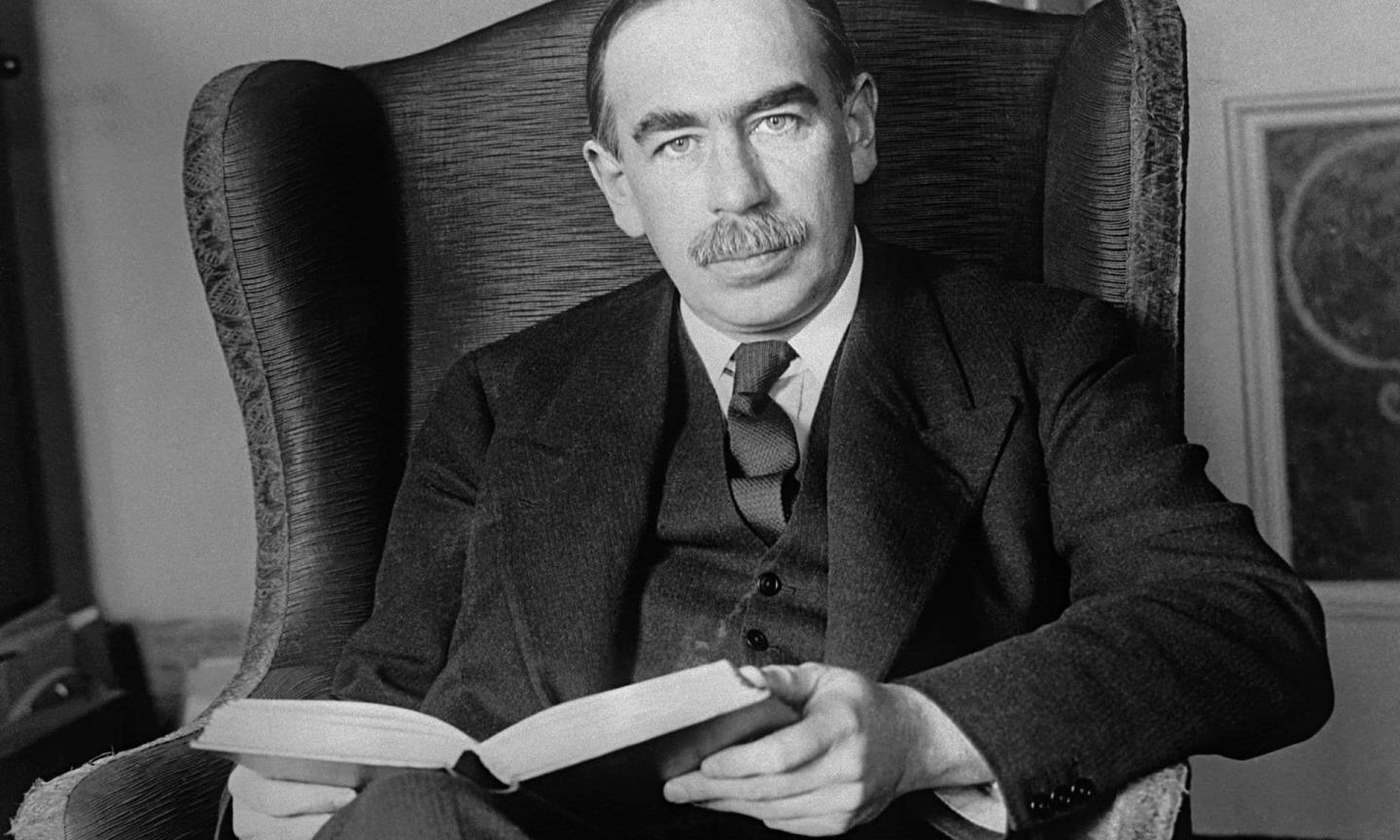Keynesian economics is a general term which includes a variety of views and authors having as a common ground the theories advanced by Keynes in his masterpiece of 1936: “The General Theory of Employment, Interest & Money”. The existence of multiple views inside the Keynesian school is due to the conversational nature of Keynes’ writings, which are sometimes ambiguous and open to different interpretations. The role played by money wage flexibility and full employment is central according to the Keynesian tradition and it is treated slightly different among different authors.
In the General Theory, as an attempt to explain the high level of unemployment of the 30s, Keynes introduces a new concept which was not foreseen by the classical theory: involuntary unemployment; its absence characterizes an economy in “full employment”. This departure from classical economics is reached by relaxing the assumption that workers are money neutral and only look at real wages when deciding the amount of work to offer. Keynes observes that, at least to a certain extent, workers do not resist reductions in real wage when prices are increasing and nominal wage is kept constant. According to Keynes, there is a unique point in which the aggregate demand and supply functions are in equilibrium, the so-called “effective demand”, which codetermines the employment level of the economy. Full employment is then defined as “a situation in which aggregate employment is inelastic in response to an increase in the effective demand for its output” [1]. Following this view, the economy does not naturally tend toward full employment, which is therefore only reached when, by chance or by design, there is a specific relation between the propensity to consume and the inducement to invest.
Later in the book, Keynes removes the rigidity assumption on wages and investigates the effects of a decrease in nominal wage on employment: because of the reduced cost of labour, prices tend to go down, decreasing the need for cash of the economy and causing a downward shift of the schedule of liquidity-preference. Consequently, the interest rate decreases and investments are stimulated allowing the economy, theoretically, to reach full employment. However, flexible wages affect the economy through the same channel that monetary policy uses to exercises its influence, and it is consequently subject to the same limitation (i.e. liquidity trap); “There is, therefore, no ground for the belief that a flexible wage policy is capable of maintaining a state of full employment – any more than for the belief that an open-market monetary policy is capable, unaided, of achieving this result” [2].
In the same year, Hicks offers an analytical interpretation of some of the key aspects of the General Theory. However, in doing that, he does not consider the labour market and the effects of flexible wages, assuming wage rigidity both in Keynes and the classics. In his article, he introduces an important instrument that allows the study of the economic system: the IS-LL. Using this framework, Hicks calls Keynes’ General Theory the “Economics of Depression” [3], reducing its scope to a particular case of the classical economics. To prove his point, Hicks compares Keynes and Wicksell, claiming that, when the economy is in full employment, “in the sense that any rise in Income immediately calls forth a rise in money wage rates” [4], the IS is horizontal. In this case, the investment rate is the Wicksellian natural interest rate.
Starting from Hick’s contribution, Modigliani extends the model by introducing the labour market and analysing the case of wage flexibility. At the same time, however, he tacitly changes Keynes’ idea of full employment by talking about underemployment instead of involuntary unemployment. According to him, the key difference between Keynes and the classics is the idea of wage rigidity. He introduces this concept in his model through the shape of the labour supply, which is horizontal until full employment; in his own words, “unless there is “full employment” the wage rate is not really a variable of the system but a datum” [5]. While Hicks focuses on Keynesian liquidity preferences to explain the presence of involuntary unemployment, according to Modigliani “this result is due entirely to the assumption of rigid wages and not to the Keynesian liquidity preference” [6]. In Modigliani’s model, when wages are flexible, the “Keynes effect” brings the economy in full employment; the idea that flexible wages can result in full employment is something new in the Keynesian economics, which is not present in Keynes or Hicks. Some years later, Tobin, without explicitly mentioning the labour market, claims that the economy tends to full employment in the long-run growth equilibrium.
References
De Vroey, M. (2016), A History of Macroeconomics, from Keynes to Lucas and beyond, Cambridge University Press, Cambridge, UK.
Hicks, J. R. (1936), “Mr Keynes and the “Classics”: A Suggested Interpretation”, Econometrica, Vol. 5, pp. 147-159.
Keynes, J. M. (1936), The General Theory of Employment, Interest, and Money, Palgrave Macmillan, London.
Modigliani, F. (1944), “Liquidity Preference and the Theory of Interest and Money”, Econometrica, Vol. 12, pp. 45-88.
Tobin, J. (1969), “A General Equilibrium Approach to Monetary Theory”, Journal of Money, Credit and Banking, Vol. 1, pp. 15-29.
Wicksell K. (1898), Interest and Prices, Macmillan, London 1936.
Quotations
[1] Keynes, J. M. (1936), Chapter 3, Section I.
[2] Keynes, J. M. (1936), Chapter 19, Section II.
[3] Hicks, J. R. (1936), Section III.
[4] Hicks, J. R. (1936), Section IV.
[5] Modigliani, F. (1944), Section II.
[6] Modigliani, F. (1944), Section XII.
